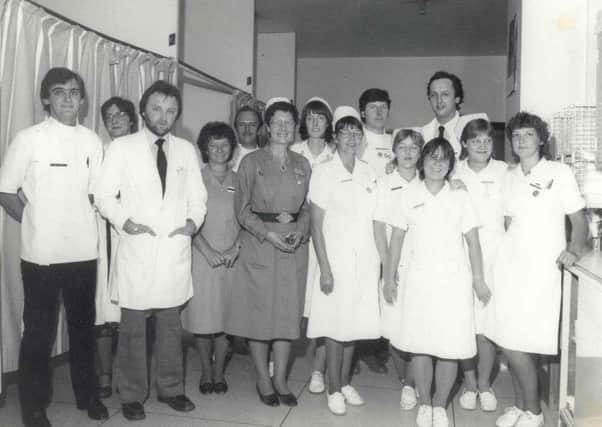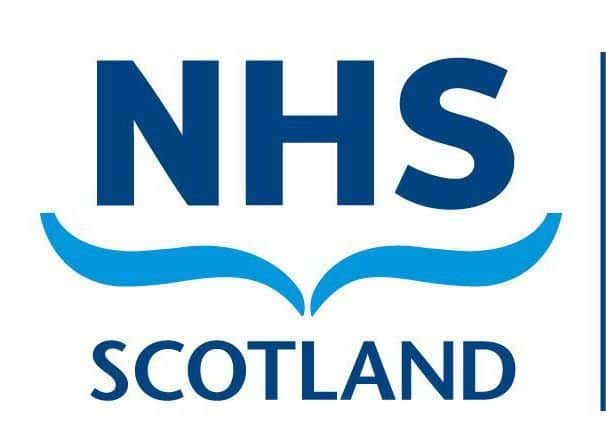NHS at 70: Bevan would be proud of health care in Fife today


The Co-Op had just opened the country’s first supermarket, the Windrush Generation had newly arrived from Jamaica, and bread rationing had come to an end.
Seventy years on, would the man whose vision transformed health care, recognise our hospitals and health centres as they stand today?
Advertisement
Hide AdAdvertisement
Hide Ad“I think he would,’’ said Tricia Marwick, chairman of NHS Fife.


“He would recognise we still run a service that is free at the point of need.
“He would be pleased to see the improvements we have made, and he would also recognise some of the challenges we have to face recruiting staff - Nye Bevan too had great difficulty getting GPs into the service.
“He would be surprised at how centralised everything has become and how people are living older and healthier for longer - and be amazed at the technological advances in treatment.’’
Advertisement
Hide AdAdvertisement
Hide AdBevan drove the creation of the NHS as soon as he was appointed Minister for Health in 1945, although the first proposal for a state health service came from Dr Somerville Hastings, president of the Socialist Medical Association, whose motion to the 1934 Labour Party conference was endorsed.
On the back of a post-war landslide win, Labour, and Bevan, set about transforming health care – putting in place a system which replaced the health care offered by local authorities and benefactors who funded small, local hospitals.
The Randolph Wemyss Hospital, for example, was the miners hospital, partly paid for out of their wages and with the patronage of the Wemyss family.
There were many other facilities scattered across Fife’s towns and villages – fever hospitals, infectious diseases units and poor houses.
Advertisement
Hide AdAdvertisement
Hide AdThe Kyles in Kirkcaldy was home to the Cottage Hospital, the only one in Scotland with circular wards, while Hunter Hospital, which still stands to this day, was for the poor, and Forth Park was where generations of Fifers were born.
As society changed, people became more mobile and populations grew, so the NHS has changed.
The old tower block at the Victoria now looks down on a massive new wing built at a cost of £170m which is the hub for all major services.
But the facilities we have today stem from Bevan’s blueprint 70 years ago.
Advertisement
Hide AdAdvertisement
Hide Ad“It didn’t all happen overnight,’’ said Tricia. “Ownership came first and progress was slow, but it was a momentous occasion. To bring together all the institutions - what an achievement.’’
It was a profound change – one that remains fundamental to our society.
Danny Boyle, who gave the NHS a key role in his stunning opening ceremony to mark the 2012 London Olympics said it was “the institution which more than any other unites our nation.’’
And at the heart of the NHS is a sense of pride – from staff and patients.
Advertisement
Hide AdAdvertisement
Hide Ad“Everyone owns the NHS. Everyone knows a story about their own family and how well they have been treated in times of illness.
“There is also a high percentage of people from across Fife who work in the NHS. They are in our communities and are very proud of what they do.
“They believe in the service they provide. They do a fantastic job and offer very good care to patients.
“In my time as chairman, one story summed it up and that was when we were hit by the wintry weather.
Advertisement
Hide AdAdvertisement
Hide Ad“There is always a contingency plan for winter, but this was a winter like no other, and staff in the acute services and in the community all went the extra mile.
“We had people covering shifts for colleagues and staying overnight to the next day’s work to keep the service going”
Is there a danger we take all that for granted?
The chairman thinks not.
“People appreciate it,” she said. “We are on top of waiting times for people to be treated, and people understand that in some situations in A&E they may need to wait, but the guarantee is you will be seen.’’
From managing the budgets to meeting targets, the NHS has grown into a massive organisation - underlined by the basic numbers.
Advertisement
Hide AdAdvertisement
Hide AdA staff roll of 8700 dealing with 90,000 cases for urgent treatment - 64,000 to A&E - and dispensing seven million prescriptions, and all to fit into a budget of £636m.
“The better we get, the more services we can provide - and the more we are expected to provide,’’ added the chairman.
“The last two years we have brought it in on budget, and we are on top of waiting times.
“Our greatest challenge remains attracting professionals – GPs, radiographers, surgeons. You can have all the money in the world, but if you cannot attract specialists then we have to look at other ways of doing it.
Advertisement
Hide AdAdvertisement
Hide Ad“With Brexit coming, a lot of people who have come here to work are facing uncertainty, while those who would have come to train are not because they do not know what is going to face them.
“But these are Scottish and UK issues – not just for Fife.”
While the bigger picture takes Bevan’s vision of free healthcare deep into the world of politics, his ethos still remains true, 70 years on.
And for the chairman, it’s straight-forward
“You will see changes – some we can’t even anticipate right now - and there will be challenges, but the level of care people get from NHS Fife will be the highest it can possibly be.
“The aim is to run a good, safe service to provide healthcare for the people of Fife when they need it, and free of charge.
“In 30 years time, that aim will be no different.”